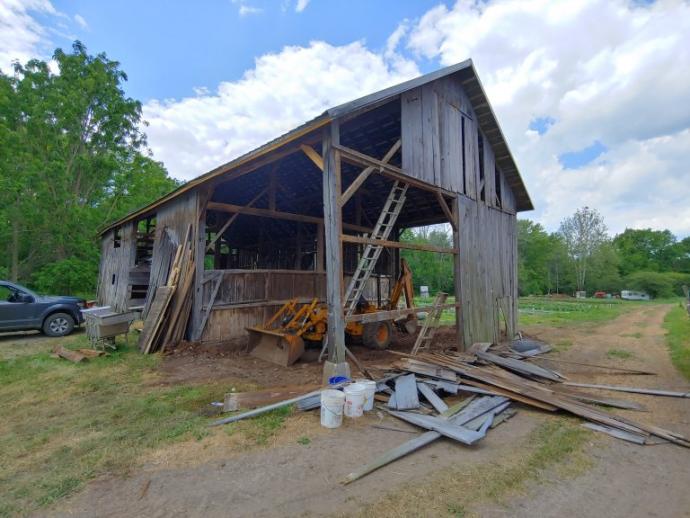
Banish the Breeze: Draft-Proofing Your Old Farmhouse Windows for a Cozy Homestead
As homesteaders, we understand the importance of self-sufficiency and making the most of what we have. And let's face it, many of us are living in older homes, full of character…and drafts! Those beautiful, original windows, while charming, can be a major source of heat loss in the winter (and unwanted heat gain in the summer). But fear not! You don't need to replace them to make a huge difference. With a little elbow grease and some simple techniques, you can significantly improve your farmhouse's energy efficiency and keep your family warm and snug all season long. This blog post will guide you through draft-proofing your old farmhouse windows, step by step.

Why Draft-Proof Your Windows?
Before we dive in, let's quickly cover why this project is so worthwhile for the self-sufficient homesteader:
- Energy Savings: Reducing drafts means less heat escaping in the winter and less cool air escaping in the summer. This translates to lower heating and cooling bills.
- Increased Comfort: No more cold spots near windows! A draft-free home is a more comfortable home.
- Reduced Carbon Footprint: Using less energy means a smaller impact on the environment. Every little bit helps!
- Preserving Your Home: Addressing drafts and moisture issues can prevent further damage to your window frames and surrounding walls.
Materials List (Estimated Cost: $50 - $150, depending on the number of windows)
- Caulk: Exterior-grade, paintable caulk (e.g., DAP Alex Plus Acrylic Latex Caulk Plus Silicone). $5-10 per tube.
- Backer Rod: Foam rod to fill large gaps before caulking. $10-20 for a roll.
- Weather Stripping: Variety of types (foam, felt, V-seal) to suit different window styles and gap sizes (e.g., Frost King). $10-30 depending on length and type.
- Window Insulation Film Kit: (Optional, but highly effective for single-pane windows) 3M Window Insulator Kit is a good option. $15-30 per kit.
- Rope Caulk: (Also known as "caulking cord") For temporarily sealing gaps for winter. $5-10 per roll
- Cleaning Supplies: Soap, water, rags, and a scraper.
- Paint (if needed): To touch up areas after caulking.
Tools List
- Caulk Gun: Essential for applying caulk.
- Utility Knife: For trimming weather stripping and scoring old caulk.
- Putty Knife or Scraper: For removing old caulk.
- Measuring Tape: Accurate measurements are key!
- Scissors: For cutting weather stripping and insulation film.
- Heat Gun or Hair Dryer: (For shrinking window insulation film). USE CAUTION WITH HEAT GUNS. FOLLOW MANUFACTURER INSTRUCTIONS AND AVOID OVERHEATING.
- Safety Glasses: ALWAYS PROTECT YOUR EYES!
- Gloves: Protect your hands from caulk and cleaning chemicals.
Step-by-Step Guide to Draft-Proofing Your Windows
Inspection and Preparation:
- Visually inspect each window: Look for cracks, gaps, missing or damaged caulk, and deteriorated weather stripping. Pay close attention to the seams where the window frame meets the wall, and where the sash (the part that moves) meets the frame.
- The "Candle Test": On a windy day, hold a lit candle (carefully!) near the window frame. If the flame flickers, you've found a draft!
- Clean the Window Area: Remove any dirt, dust, and old caulk with soap, water, and a scraper. A clean surface ensures proper adhesion of caulk and weather stripping.

Caulking:
- Identify Gaps: Focus on the exterior of the window where the frame meets the siding or brick. These are prime spots for air leaks.
- Insert Backer Rod (if needed): For gaps larger than ¼ inch (6mm), insert backer rod to fill the space before caulking. This provides a backing for the caulk and prevents it from sinking too far into the gap.
- Apply Caulk: Load your caulk gun and practice on a piece of cardboard first. Apply a smooth, even bead of caulk along the gap. Hold the gun at a 45-degree angle and move slowly and steadily.
- Smooth the Caulk: Immediately after applying the caulk, smooth it with a wet finger or a damp cloth. This creates a professional-looking seal and ensures good adhesion.
- Allow to Dry: Let the caulk dry completely according to the manufacturer's instructions (usually 24-48 hours) before painting, if desired.

Weather Stripping:
- Choose the Right Type: There are several types of weather stripping. Foam is inexpensive and easy to install, but it's not as durable. Felt is another budget-friendly option. V-seal (spring bronze or plastic) is more durable and effective, but it can be trickier to install.
- Measure and Cut: Measure the length of the window sash (the part that moves) where the weather stripping will be applied. Cut the weather stripping to the correct length.
- Install the Weather Stripping: Peel off the backing (if it's self-adhesive) and carefully apply the weather stripping to the window sash. Make sure it's properly aligned and firmly pressed into place. For V-seal, follow the manufacturer's instructions, as it typically requires nailing or stapling.
Window Insulation Film (Optional):
- Clean the Window: Thoroughly clean the inside of the windowpane.
- Apply Double-Sided Tape: Apply the double-sided tape from the kit around the perimeter of the window frame.
- Attach the Film: Carefully attach the insulation film to the tape, smoothing out any wrinkles.
- Shrink the Film: Use a hair dryer or heat gun (on a low setting!) to shrink the film, removing any remaining wrinkles and creating a tight, clear seal. BE CAREFUL NOT TO OVERHEAT THE FILM, AS IT CAN MELT OR DAMAGE THE WINDOW FRAME.
Rope Caulk (Temporary Sealing):
- For windows you don't open during the winter months, rope caulk is an excellent temporary solution. Simply press the rope caulk into any gaps around the window frame. It's easily removable in the spring without damaging the existing finish.

Troubleshooting Tips
- Caulk Not Adhering? Make sure the surface is clean and dry. If it's very cold, warm the caulk tube slightly before use.
- Weather Stripping Peeling Off? Use a stronger adhesive or try a different type of weather stripping.
- Window Insulation Film Not Shrinking Properly? Make sure the heat gun or hair dryer is on a low setting and that you're moving it constantly to avoid overheating.
- Still Feeling Drafts? Re-inspect the window and look for any areas you might have missed. Sometimes, multiple layers of defense are needed!
The Rewards of a Draft-Free Farmhouse
Once you've completed this project, you'll notice a significant difference in the comfort of your home. The light will stream in through your windows, no longer carrying a chilling breeze. You'll feel the warmth of the sun without the icy drafts, and your heating bill will thank you. This simple DIY project is a great way to improve your home's energy efficiency, save money, and create a more comfortable and sustainable homestead. So gather your supplies, roll up your sleeves, and get ready to banish those drafts! You'll be glad you did.
